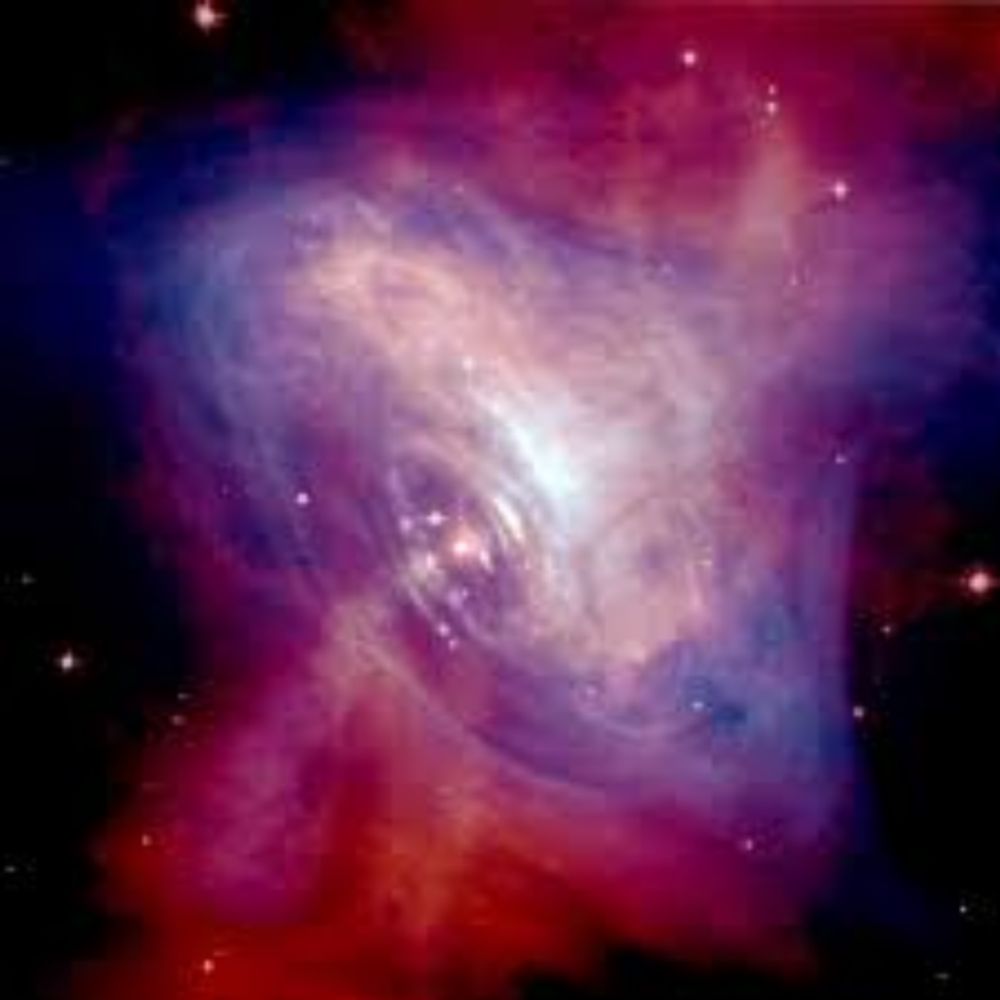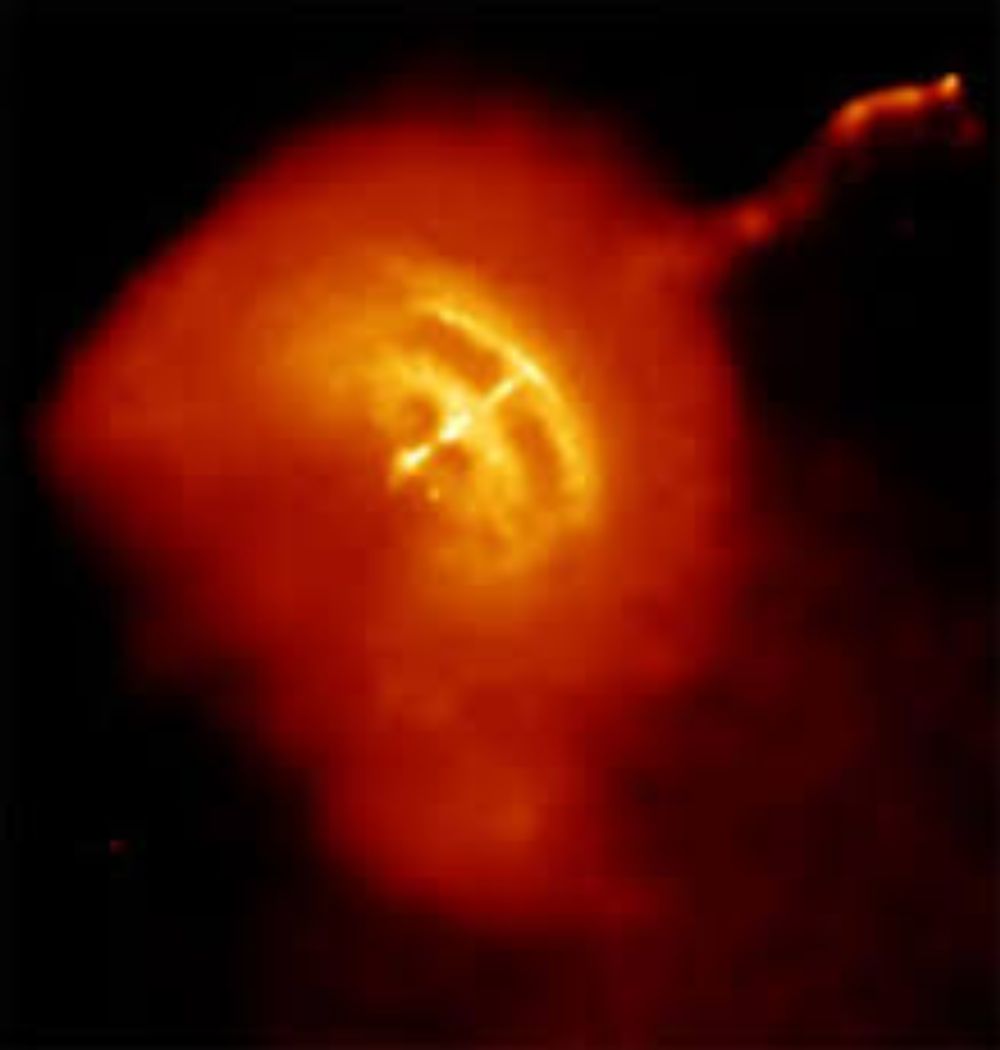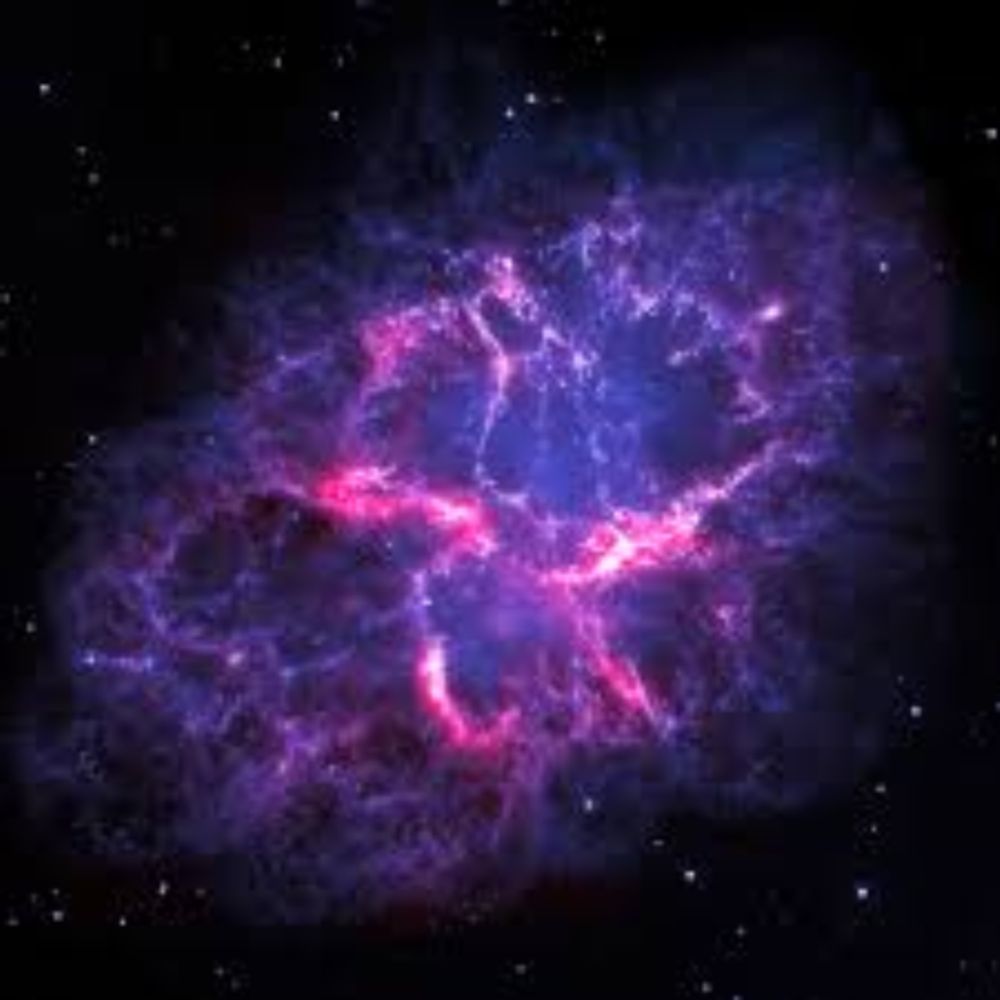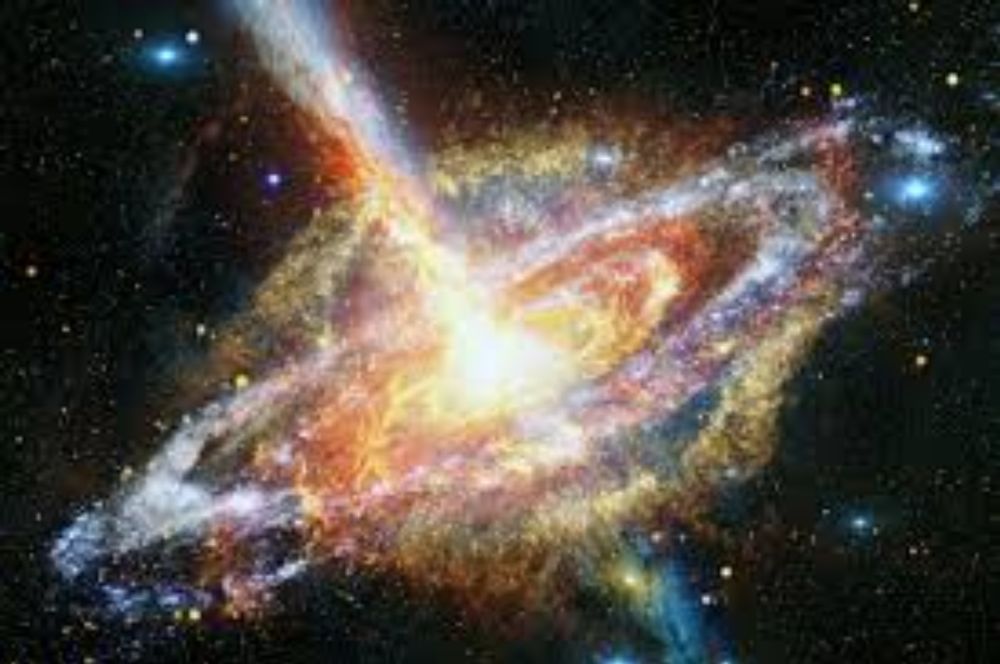

 Pulsars are strange stars that send out radio signals as a series of quick, short bleeps. Pulsars are a kind of incredibly dense star called a neutron star. A cupful of neutron star material weighs a million million tonnes.A pulsar measures about 16 km (10 miles) across and has the mass of about one anda half Suns.The fastest pulsars spin several hundred times a second, making one flash each turn. They were discovered in 1967 by radio astronomers in Cambridge, England. The time between the bleeps is different from one pulsar to another: it ranges from a few seconds to a small fraction of a second. A pulsar acts a bit like a lighthouse. It is a spinning star sending out two beams into space in opposite directions. Radio astronomers can catch the beams as they Sweep past their telescopes.
Pulsars are strange stars that send out radio signals as a series of quick, short bleeps. Pulsars are a kind of incredibly dense star called a neutron star. A cupful of neutron star material weighs a million million tonnes.A pulsar measures about 16 km (10 miles) across and has the mass of about one anda half Suns.The fastest pulsars spin several hundred times a second, making one flash each turn. They were discovered in 1967 by radio astronomers in Cambridge, England. The time between the bleeps is different from one pulsar to another: it ranges from a few seconds to a small fraction of a second. A pulsar acts a bit like a lighthouse. It is a spinning star sending out two beams into space in opposite directions. Radio astronomers can catch the beams as they Sweep past their telescopes.
 The strange stars that become pulsars are the remains of ordinary stars that reach the ends of their lives and explode.
The strange stars that become pulsars are the remains of ordinary stars that reach the ends of their lives and explode.
THE CREB NEBULA
 The most famous pulsar 1s in the middle of the Crab Nebula, a patch of glowing gas in the constellation Taurus. Chinese observers saw a star explode at this point in the sky in the year 1054. Exploding stars of this sort are called supernovaS.
The most famous pulsar 1s in the middle of the Crab Nebula, a patch of glowing gas in the constellation Taurus. Chinese observers saw a star explode at this point in the sky in the year 1054. Exploding stars of this sort are called supernovaS.
The Crab pulsar sends out 30 bleeps every second. As well as the radio pulse, light and X-rays from the star are switching on and off at the same speed.
The nebula got its name from the shape of the first drawings made of it by the Earl of Rosse in 1848. It looks rather like a tangled mass of threads and is still expanding.


Some interesting facts about pulsars:
1. A teaspoon of a Pulsar can weigh as a lot as the biggest mountain on Earth.
2. Pulsars spin among five,000 to 40,000 instances according to minute.
3. Pulsars gradual down as they age.
4. The first neutron supermegacelebrity (pulsar) located changed into PSR B1919+21, through Jocelyn Bell Burnell on November 28th, 1967.
5. A magnetar is a neutron supermegacelebrity that as vastly effective magnetic subject. A magnetar could have a magnetic subject that may be a thousand trillion instances more than Earth’s.
6. A radio-quiet neutron supermegacelebrity doesn’t emit any detectable radio emissions, like a pulsar and doesn’t have the identical magnetic subject that as a magnetar.
7. To recognize the density of a neutron supermegacelebrity, consider one the dimensions of Manhattan Island. While it'd simplest be thirteen miles long, it'd have a mass 1.five instances the dimensions of our sun.
8. A supernova explosion will create a neutron supermegacelebrity, a block hollow or smash the progenitor.
Thanks for reading guys
Keep supporting guys 😊








